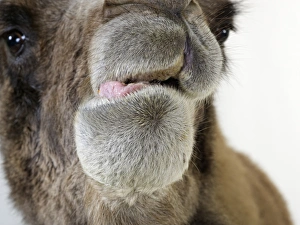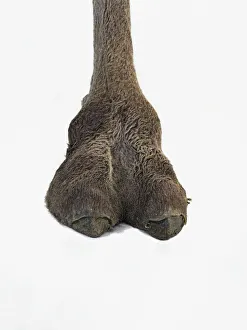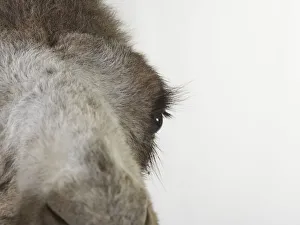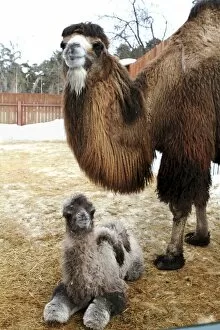Bactrian Camel Collection (page 17)
The Bactrian camel, also known as Camelus bactrianus, has a rich history and is featured in various artworks and photographs
All Professionally Made to Order for Quick Shipping
The Bactrian camel, also known as Camelus bactrianus, has a rich history and is featured in various artworks and photographs. In the Mappa Mundi from 1290, this magnificent creature is depicted on vellum, showcasing its significance even back then. Fast forward to modern times, we see a domesticated breeding male Bactrian camel residing in a nomad's ger pen, highlighting their role in traditional lifestyles. One can imagine the vastness of deserts when witnessing a Bedu gracefully riding his camel amidst sand dunes. The Singing Sand Dunes at Khongoryn Els in the Gobi Desert provide an enchanting backdrop for another sighting of these majestic creatures. Silhouetted against a breathtaking sunset sky, a male Bactrian camel captures our attention with its striking presence. In Mongolia's Bashang Grassland, Mongols skillfully drive caravans of Bactrian camels through vast landscapes - an age-old tradition that continues to thrive today. These resilient animals are not limited to Mongolia; they can also be found roaming the sandy terrain of Nubra Valley in Ladakh, India. Artistic representations further emphasize their cultural importance. A woodcut collection showcases them among other animals while an engraving from 1836 features both Dromedary and Bactrian camels side by side. Even tapestries like "The History of Hannibal" depict these remarkable creatures as part of historical narratives. Finally, "La vente de Joseph" by Konstantin Dmitrievich Flavitski portrays an episode from Genesis where Joseph is sold into slavery by his brothers to merchants who likely used camels for transportation during that era. From ancient maps to contemporary photographs and artistic masterpieces spanning centuries - the enduring presence of the Bactrian camel serves as a reminder of their resilience and cultural significance throughout history.









